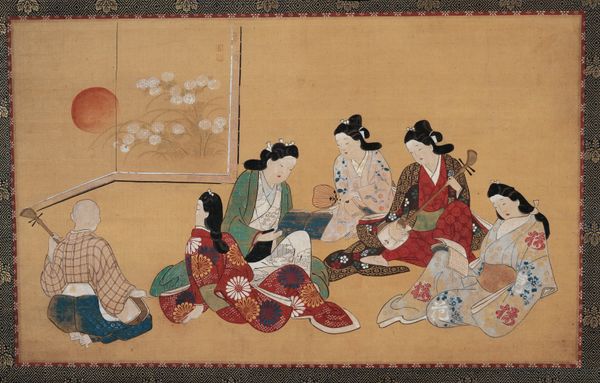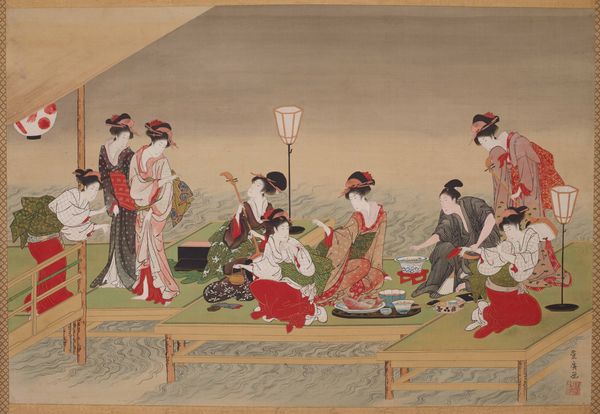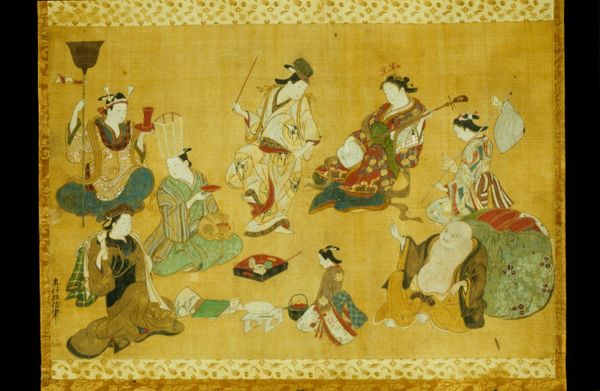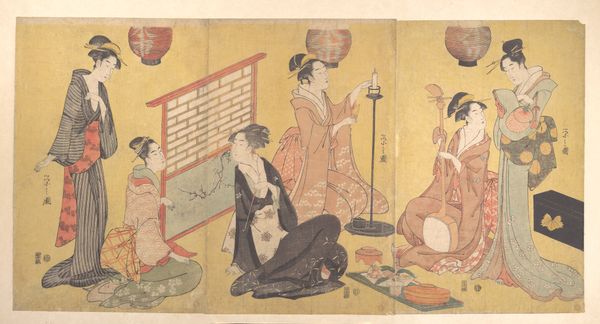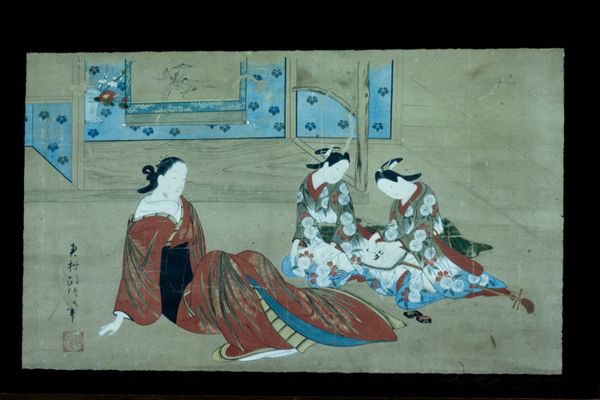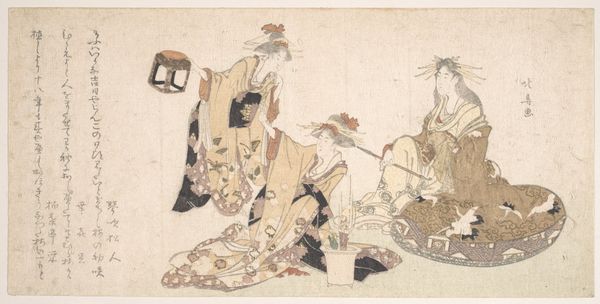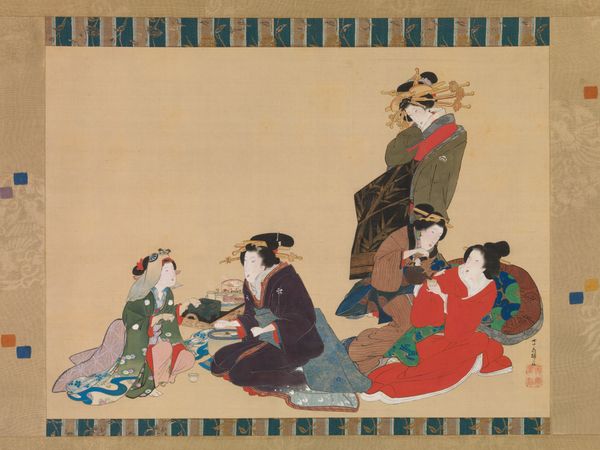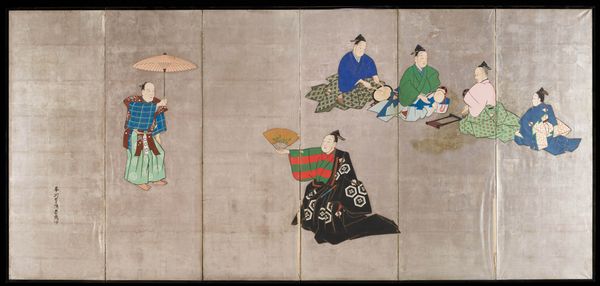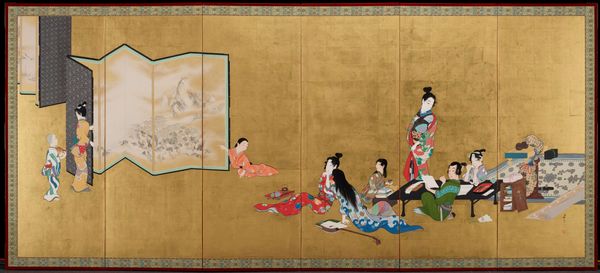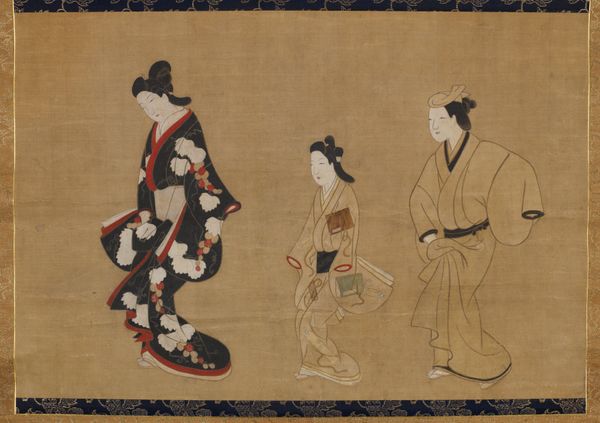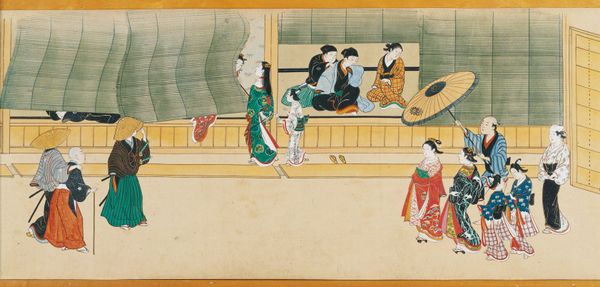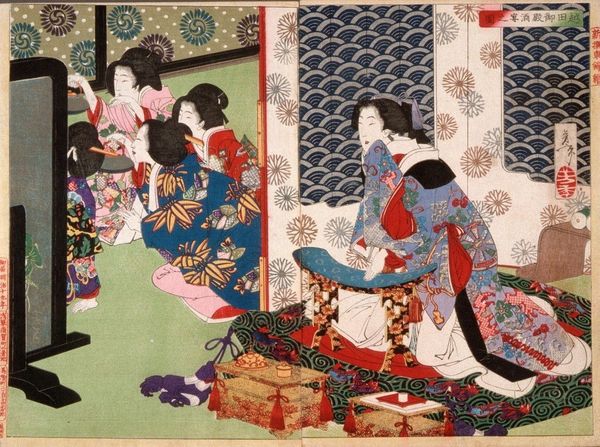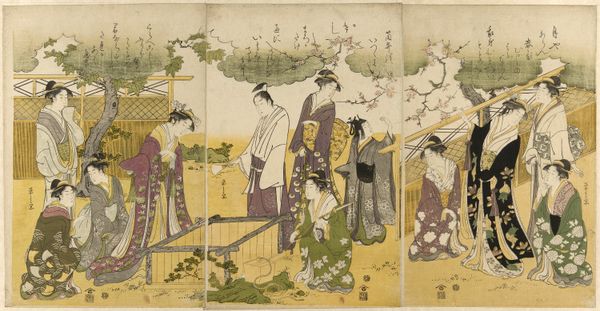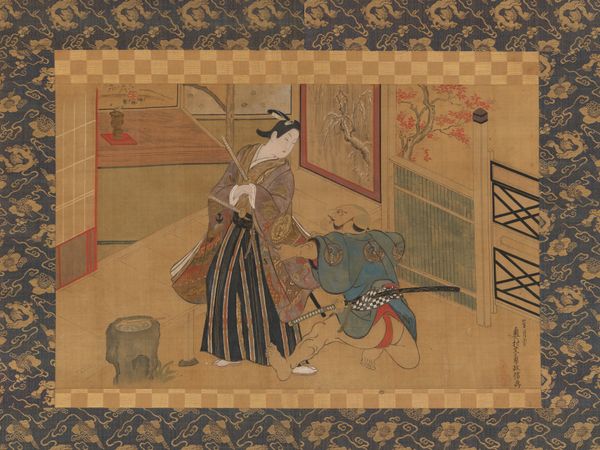
painting, print, paper, ink
#
portrait
#
water colours
#
painting
# print
#
asian-art
#
ukiyo-e
#
japan
#
paper
#
handmade artwork painting
#
ink
#
painting art
#
genre-painting
Dimensions: 12 13/16 x 28 15/16 in. (32.5 x 73.5 cm) (image)
Copyright: Public Domain
Curator: Let's take a closer look at this print, created around 1784 by Utagawa Toyoharu. It's titled "Actor Segawa Kikunojō III at a Party." Editor: It feels like a quiet moment, despite being a gathering. The arrangement of figures and the subdued colors give it a remarkable sense of peace. Curator: Indeed. Toyoharu was a pioneer of ukiyo-e art. He was fascinated by Western perspective, integrating its principles into traditional Japanese art forms, which explains the rather convincing recession into space. Editor: The receding lines of the tatami mats and the placement of the figures create depth, certainly, but what strikes me most is the use of color. Note the restrained palette – subtle gradations of browns, grays, and blues, with the occasional pop of red drawing the eye. It’s exquisitely balanced. Curator: Color played a pivotal role. Consider the socio-cultural dynamics at the time. Ukiyo-e prints became accessible during the Edo period with the rise of a prosperous merchant class, portraying popular entertainment like kabuki theatre. The patronage these actors and the theatrical district gained affected established class structures of the era. Editor: Fascinating! Segawa Kikunojō III, here immortalized, clearly transcended mere celebrity, becoming a symbol of his era, but I'm compelled by Toyoharu’s understanding of form. He uses line economically, but with tremendous precision. The delicate curves of the actor's kimono and the expressive gestures capture their personalities beautifully. Curator: And we see it was designed for the print market. These prints offered the growing urban middle class access to art and entertainment and reinforced social status by documenting contemporary icons and theatrical spectacles. The museum owning this one even reveals it's made with ink and water colors on paper. Editor: Examining it solely as a composition yields new meaning though, it transcends time. It represents a masterclass in evoking a sense of harmony and refinement through careful manipulation of color and line. Curator: It serves as a mirror reflecting society, class, and evolving tastes, revealing a snapshot of cultural shifts within Japanese society. It bridges a social need, now collected as a historical treasure. Editor: And personally, beyond its cultural value, as a composition it's incredibly moving. A testament to the power of restraint.
Comments
minneapolisinstituteofart almost 2 years ago
⋮
On the right in front of an opened sliding door that provides a view into the garden sits the kabuki actor Segawa Kikunojō III (1751-1810), identified by the butterfly crest on his robe. Kikunojō III was a popular performer of female roles. The older man on the left is the host of the party and could be a kabuki lover who commissioned this painting and is portrayed here.
Join the conversation
Join millions of artists and users on Artera today and experience the ultimate creative platform.
